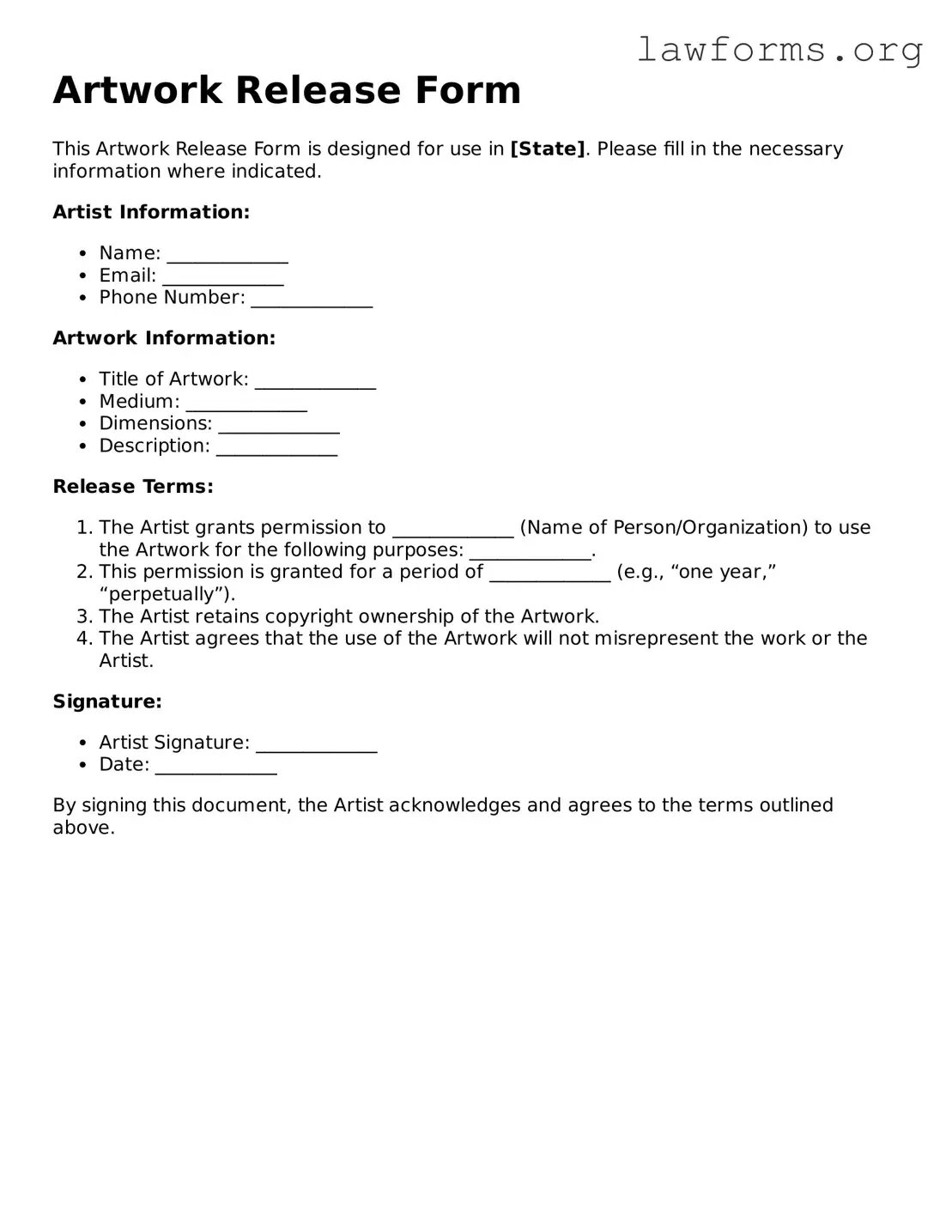Valid Artwork Release Form
The Artwork Release form is a legal document that allows artists to grant permission for their artwork to be used in various ways, such as reproduction, distribution, or public display. This form helps protect the rights of the artist while ensuring that the artwork can be utilized appropriately by others. Understanding this form is essential for both artists and those who wish to use their work.
Ready to secure your rights or use artwork responsibly? Fill out the form by clicking the button below.
Customize Document Online
